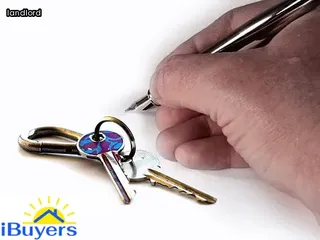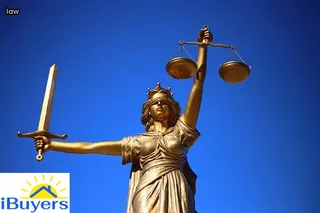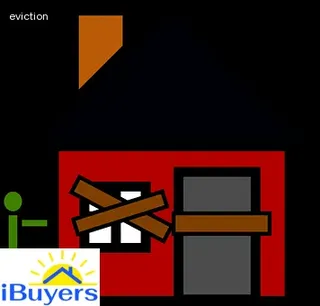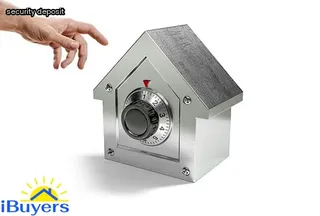In Montana, landlords have the right to collect a security deposit from their tenants in order to cover any damage the tenant may cause to the rental property. According to Montana landlord tenant laws, the maximum amount of security deposits that can be collected is two months’ rent or $2,500, depending on which is lower.
The security deposit must also be placed into an escrow account and landlords are required to provide tenants with a receipt within 30 days of receiving it. Furthermore, if a landlord fails to return the security deposit within 30 days after the tenant has vacated, they must pay the tenant interest on their security deposit at a rate of 4% per year.
Finally, landlords are mandated by law to provide written notice if they intend to withhold any portion of the security deposit for damages. This notice should include itemized deductions and a description of how those deductions were calculated.

In Montana, landlords are required to provide smoke and carbon monoxide detectors in all rental units. This is an important safety measure that can help protect tenants and their property from dangerous fires and fumes.
Landlords must also ensure the detectors are properly installed and maintained; tenants should be informed if any repairs or replacements need to be made. The Montana Landlord Tenant Act states that all smoke detectors must be tested annually and batteries must be changed at least once a year.
Additionally, carbon monoxide detectors should be checked regularly for proper function, as they are essential in preventing the accumulation of toxic gases in the home. It is a landlord’s responsibility to ensure that these devices are functioning correctly to keep their tenants safe.
If any smoke or carbon monoxide detector malfunctions or fails to meet requirements, it is the landlord’s duty to repair it immediately or replace it with a suitable device; failure to do so could result in legal action being taken against them.
As a Montana landlord, it is important to understand the rights and responsibilities you have related to tenant damage to your property. By law, all tenants are responsible for any damage caused by, or resulting from their activities or those of their guests.
This includes intentional or negligent damage. Tenants must also keep the rental unit in good condition and repair during tenancy, with the exception of ordinary wear and tear.
Landlords may not collect a security deposit that exceeds an amount equal to two months' rent, or use the security deposit as a partial payment of rent. Landlords must provide written notice prior to increasing rents and they may not evict a tenant except for failure to pay rent, violation of lease terms, causing substantial damage to the property or certain other reasons specified by state law.
Tenants have the right to expect quiet enjoyment of their rental unit and may not be denied access unless necessary for repairs or maintenance. In addition, tenants are entitled to receive proper notice before landlords enter their rental units for purposes other than inspection or maintenance.

When screening a potential tenant in Montana, it’s important for landlords to consider a few key points. Firstly, landlords should have an established application process to identify any potential tenants who may damage their property.
Additionally, all tenants should be required to provide proof of income and references before signing the lease agreement. Furthermore, it is also important to know if the proposed tenant has any prior eviction records or criminal background information that could lead to future problems.
Finally, a landlord should also consider whether the proposed tenant has enough money saved up for their security deposit and any other fees associated with renting the property. Understanding these key points can help landlords protect their investments and reduce the potential for costly damages caused by tenants in Montana.
In Montana, landlords must be familiar with different forms that are required in the leasing process. These forms vary depending on the type of property and its location.
The Montana Residential Landlord and Tenant Act outlines several key notification forms that can be used to inform tenants of the landlord's rights and duties. Of particular importance is a written notice to enter the premises, which must give at least 48 hours' notice before entering.
Additionally, a security deposit disclosure form should be provided to the tenant upon signing the lease agreement. This disclosure details how the security deposit will be handled, including when and how it will be refunded after tenancy ends.
Finally, landlords need to provide tenants with a move-out inspection checklist so they can document any damage or cleaning requirements for when their tenancy ends. Having these common forms readily available helps protect both tenants and landlords from misunderstandings regarding damages to property in Montana.

Understanding tenant damage to property in Montana is an important topic for landlords to become familiar with. Across the nation, landlord-tenant laws vary from state to state, so it is essential for landlords to understand their rights and responsibilities under the law.
In Montana, a landlord has the right to pursue legal action against a tenant if damage is done to their property, however, there are specific procedures that must be followed before this can happen. These procedures include obtaining the necessary paperwork from local courts, providing notice of the damages to tenants, and having evidence of negligence or malicious intent.
Additionally, landlords must also abide by certain safety regulations such as ensuring that all appliances are functioning properly and that any hazardous materials are properly stored. Understanding these laws is key for landlords in order to protect their investments while also complying with local regulations.
When creating a tenant application, landlords should consider including a variety of questions that give insight into the character of potential tenants. Landlords may want to ask for contact information, such as references and proof of previous landlord experience.
It can also be helpful to inquire about an applicant's income level and employment history. Additionally, landlords should consider asking questions about the applicant's criminal background or eviction history.
Furthermore, requesting a copy of a valid form of identification from each applicant is essential in verifying their identity. When assessing applicants, landlords should also have them sign an agreement that outlines their rights and obligations as tenants.
This document should include details about rent payments and any rules or regulations applicable to the property. Understanding how to create a comprehensive tenant application is vital in protecting both the landlord and tenant in Montana when it comes to tenant damage to property.

When entering into a tenancy agreement, it is important for landlords to understand the terms they are agreeing to. This includes the rights and duties of both parties when it comes to tenant damage to property in Montana.
Landlords should be aware of their responsibility to maintain the property, as well as any regulations or laws that must be followed during the tenancy period. They also need to know what constitutes ‘normal wear and tear’ versus ‘actual damage’, how much notice needs to be given by tenants before vacating, and what happens if a tenant fails to pay rent.
Additionally, landlords should research any state-specific regulations related to tenant damage and how this affects their rights as a landlord in Montana. By understanding the terms of a tenancy agreement, landlords can ensure that their rights are protected and that any potential issues with tenants can be addressed quickly and effectively.
When a tenant moves out of a rental unit, the landlord has certain requirements they must follow in order to return the security deposit. In Montana, these conditions are outlined in the state’s Residential Landlord and Tenant Act (Section 70-24-441).
Before returning a security deposit, landlords must provide written notice of their intent to retain all or part of the deposit, along with an itemized list of damages and the estimated cost of repair. If repairs are needed due to damage done by the tenant, such as holes in walls or broken windows, then the landlord can deduct from the security deposit any costs associated with repairs.
If a tenant leaves owing rent or late fees, that amount can also be deducted from the security deposit. The remaining balance must then be returned within 10 days of termination of tenancy.
If a landlord fails to adhere to these rules and regulations, they may be liable for twice the amount of the original deposit plus attorney’s fees and court costs. It is important for both tenants and landlords in Montana to understand their rights and responsibilities when it comes to returning a security deposit after tenancy ends.

Under Montana law, landlords have certain minimum property maintenance standards they must adhere to in order to protect tenants. This includes ensuring that buildings are structurally sound, have adequate heating and ventilation systems in place, and are free from fire and health hazards.
Landlords must also provide adequate plumbing, electrical services, and garbage removal. In the event of tenant damages to the property, landlords must assess the damage and make any necessary repairs before the tenant moves out.
Furthermore, tenants may be held financially responsible for any repairs beyond what is considered normal wear-and-tear if they breach their lease agreement. Landlords should always document all damages incurred by tenants within their rental unit so they can prove their case in court if need be.
Understanding these rights and duties as a landlord will help ensure that both parties are treated fairly when it comes to tenant damage to the property in Montana.
When entering into a lease agreement, both the landlord and tenant must agree to the terms of access for the property. Tenants should be aware of the landlord's right to enter the property for various reasons such as inspection or repairs.
The agreement should also define how much notice needs to be given prior to entry, normally 24-hours. Landlords must use reasonable care when accessing the property and take steps to ensure that any damage done as a result of their actions is repaired.
It is important for landlords to remember that they are responsible for notifying tenants in advance about any changes in access policies or restrictions due to safety or health issues. Tenants have the right to expect that their privacy will be respected by landlords and should be provided with a key if requested.
Ultimately, it is important that landlords and tenants understand their respective rights and duties when it comes to access rights so they can avoid potential conflict down the road.

Under Montana law, landlords must provide written notice to tenants before subletting the property. Tenants may only sublet if the landlord has given prior consent and all conditions of the lease agreement are met.
Landlords have the right to charge a reasonable fee for processing a sublet as well as require that any tenant who is subletting show proof of liability insurance. Additionally, landlords are not allowed to discriminate against potential subtenants based on race, religion, national origin, or other protected statuses.
As part of the lease agreement, landlords may require that tenants obtain written permission from them before allowing someone else to use their property. This includes ensuring that the person who is subletting meets all applicable screening criteria set forth by the landlord and has signed a rental agreement with the landlord's approval.
In some cases, landlords may also require that they be notified in writing when a tenant wants to allow another person access to their unit. The landlord must follow specific procedures such as providing written notice of intent to terminate and waiting out any applicable grace periods before evicting a tenant for unauthorized subleasing.
In Montana, a landlord has the right to terminate a lease agreement and evict a tenant if they damage the property in any way. This can be done through either verbal or written notice, though written notice is preferred as it will provide proof that the tenant was aware of the termination.
Before terminating a lease agreement, landlords should consult with an attorney or seek legal counsel to ensure that all steps are taken in accordance with the law. The amount of time required for termination varies depending on how severe the damage is and whether it was intentional or accidental.
For example, if a tenant causes significant damage to the property which is deemed to be beyond repair, then the landlord may choose to terminate the lease immediately without waiting for any specified period of time. On the other hand, if there is only minor damage caused by negligence, then the landlord must give adequate notice before terminating the lease agreement.
In all cases, landlords must make sure they have followed all applicable state laws when terminating a lease agreement and evicting a tenant in Montana.

In Montana, a landlord must take certain steps to determine whether a tenant has abandoned their property. First, the landlord must give notice to the tenant that they have not paid rent or otherwise complied with the lease agreement.
The notice should state that the tenant has a certain number of days to respond and remedy the situation, usually between 10-30 days depending on local laws. If the tenant fails to respond during this time period and any other agreements made in writing between them, the landlord may assume that they have abandoned their property.
Additionally, if personal belongings are left behind that are not normally stored in a rental unit and no contact is made during this time period, it may be assumed that the tenant has abandoned their property as well. Once abandonment is determined, landlords are able to take possession of it and use it or dispose of it according to local laws.
In Montana, landlords are obligated to follow the state guidelines for evicting tenants if they have caused damage to the property. To begin this process, the landlord must give written notice to the tenant outlining specific details about why the eviction is necessary.
This includes a timeline of when and how rent should be paid and what damages must be rectified. If these terms are not met, then the landlord can initiate an eviction proceeding in court.
The court will decide on whether or not the landlord was justified in initiating an eviction based on their evidence and testimony. In some cases, this may include paying fines to cover any damages that were caused by the tenant prior to their departure.
It is important that landlords understand how to navigate through these processes as well as their rights and duties under Montana law, so they can protect their property from any tenant-caused damage.

As a landlord in Montana, understanding the rights and duties associated with tenant damage to property is essential for protecting against liability. It is important to understand the Landlord-Tenant Act, which outlines the rights and obligations of both parties regarding rental properties.
The act states that landlords must make all reasonable efforts to maintain the premises in a safe and habitable condition, provide notice of any known defects on the property, and keep accurate records of repairs or maintenance completed. Additionally, landlords should include specific clauses in their lease agreements outlining their expectations for tenant behavior regarding damages to property, as well as establishing clear procedures for resolving disputes over such matters.
Furthermore, it's essential that landlords are familiar with all applicable state laws related to security deposits and other financial remedies in cases of tenant damage to property. Taking proactive steps like these can help protect landlords from potential legal issues and safeguard their investments.
When renting property in Montana, it is important for landlords to know the regulations and restrictions that must be placed on tenants to protect their property. This includes limitations on pets, smoking, and other activities that could potentially cause damage to the rental unit.
Landlords should make sure that any pet restrictions are outlined in a tenant agreement prior to signing, including any additional fees or deposits required. Furthermore, a smoke-free policy should be implemented to avoid potential health risks and damage due to secondhand smoke.
Lastly, certain activities such as fireworks or painting are generally not allowed in rental units as they can cause long-term damage if not done properly. As a landlord, it is essential to have these restrictions in place so that tenants understand their rights and responsibilities when it comes to protecting your property.

As a landlord in Montana, you are entitled to pursue unpaid rent or other fees from your tenant, even if the tenant has already vacated the rental property. You may attempt to collect payment through various methods such as filing a claim in small claims court or sending a demand letter.
If these tactics fail, you may have to hire an attorney and take legal action against the tenant. It is important to keep records of all communication and attempts at collection.
You should also provide written notice that states the amount owed by the tenant and a specific date when it is due. If the tenant fails to pay by this date, you can begin eviction proceedings which will require filing paperwork with the local court.
In some cases, garnishing wages or placing liens on assets are possible avenues for recovering unpaid rent or fees owed by tenants in Montana.
In Montana, a landlord has the right to charge a tenant for damages to the property up to one year after the tenant moves out. This is because state law recognizes that it can take some time for property owners to assess any potential damage.
Furthermore, landlords may choose to define specific types of damages in their rental agreement, such as pet damage or smoking damage, and then seek reimbursement from tenants for these costs. Landlords must also provide tenants with a written notice of damages within 30 days after they move out so that tenants have the opportunity to dispute any charges they believe are unfair.
It is important for tenants to read over their rental agreement carefully and be aware of any potential fees they could incur if they do not follow the guidelines set by the landlord.

In Montana, the statute of limitations for property damage is four years. A landlord’s rights and duties in the event of tenant damage to property depend on this statute of limitations.
If a landlord discovers tenant damage to their property that occurred more than four years prior, they may not be able to take legal action against the tenant for compensation. However, if the landlord discovers tenant damage to their property within four years after it was incurred, they may be able to seek legal remedies against the tenant for damages suffered.
It is important for landlords in Montana to understand their rights and duties in order to protect their interests when it comes to recovering from tenant-inflicted property damage.
If you're a tenant in Montana who believes your landlord has violated the terms of your rental agreement, you may file a complaint with the Montana Department of Labor & Industry. You can do so by submitting a written notice to the department, specifying the nature of the dispute and any evidence that supports your claim.
It is important that you provide as much detail as possible to ensure that the department can properly investigate your claim and take appropriate action against your landlord. The department will then contact both parties to discuss their respective sides of the story and attempt to settle any disputes amicably.
If an agreement cannot be reached, you have the right to request mediation or pursue legal action. It is important to remember that filing a complaint does not guarantee a positive outcome; however, it does ensure that your rights are protected and gives you additional leverage if necessary.
In Montana, landlords have a certain amount of time to repair damages after being made aware of the issue. If a tenant reports damage to the property, the landlord must address the issue within a reasonable amount of time.
Generally speaking, this means that landlords in Montana should fix any damage to rental properties within 7-10 days of being notified by the tenant. Tenant rights are protected under Montana law which requires landlords to keep their property in a safe and habitable condition.
As such, landlords are expected to comply with all relevant health and safety codes as well as promptly address any problems reported by tenants. If a landlord fails to repair damages in a timely manner, they may be subject to legal action from their tenants.
Therefore it is important for landlords in Montana to understand their legal obligations and act quickly when presented with reports of damage from tenants.
A: The landlord must serve the tenant with a Notice to Quit, which specifies that the tenant must vacate the premises within a certain amount of time. If the tenant does not comply, the landlord can proceed with filing an Eviction Notice and following through with other legal steps as outlined in the Tenancy Agreement.
A: No. Landlords in Montana are prohibited from discriminating against tenants due to any damage they may have caused. Landlords must adhere to the state’s anti-discrimination laws and should consult a lawyer if they believe they have grounds for an eviction due to tenant-caused actual damages.
A: A landlord in Montana has the right to pursue legal action against a tenant for damage caused beyond normal wear and tear. The landlord must provide written notice of the damages, an itemized list of repair costs, and an opportunity for the tenant to respond before commencing court proceedings. A landlord is also responsible for providing a safe, habitable rental unit and making necessary repairs in a timely manner.